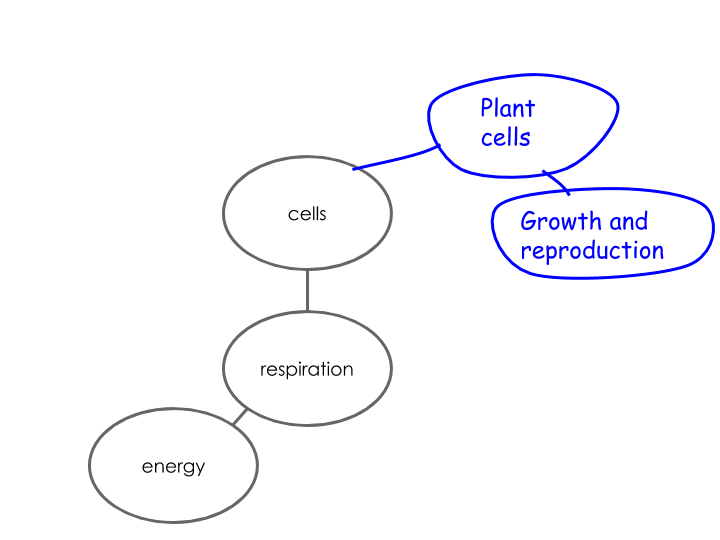Being a good reader correlates with good performance in science. Well, it would wouldn’t it? Reading scores correlate well with performance in most subjects. But it would be naive to think that improving reading ability would improve performance in science.
It is hard to learn science through reading, which is presumably why we don’t do it often in class. If you want a learner to understand and learn a complex concept, you are unlikely to set a text. This isn’t what reading is good for, at least for most of us.
In this post I will describe three effective and efficient uses of reading in science lessons: elaboration, concrete examples and hinterland.
Elaboration (Learning Scientists here)
“The term elaboration can be used to mean a lot of different things. However, when we are talking about studying using elaboration, it involves explaining and describing ideas with many details. Elaboration also involves making connections among ideas you are trying to learn and connecting the material to your own experiences, memories, and day-to-day life.”
The Learning Scientists
Reading is good for this – if the concept is already well know, reading can provide examples and links to other previously learnt knowledge.
To ensure the reader thinks about the text, she should do something with the information. For example:
- write a couple of sentences (e.g. “In class we learnt about respiration in animal cells, but it also takes place in plant cells. Plants use respiration for growth and reproduction.”) or
- add to graphic knowledge organisers.

Concrete examples (see learning scientists here)
“To really nail down an abstract idea, you need to solidify it in your mind. You can do this by being specific and concrete.”
The Learning Scientists
Reading is an effective way of introducing well chosen concrete examples. You might teach anaerobic respiration in the context of an athlete, but then ask your readers to read texts about yeasts and bacteria.
The follow-up task needs to involve thinking about respiration as concrete examples (and then discussing the similarities and differences with other concrete examples – which takes us back to elaboration).
Hinterland
Hinterland is scaffolding knowlegde – knowlegde which helps the learner contextualise and structure new knowledge. The clearest explanation of hinterland in science is Adam Boxer’s blog (here). Reading is well suited to expanding a concept’s hinterland. This respiration timeline is a good example.
My book (here) is full of hinterland – a shameless plug, but I spent a long time on the stories behind the discoveries.
We know that only the rarest learner will be able to learn key scientific concepts through reading. But reading is an efficient way for developing schema once the core knowlegde is learnt. We should ensure it happens in our teaching.
@benrogersedu

I like the sentiment, but not so keen on examples used.
We should encourage children to read more, and as science teachers we have a responsibility to show children that reading and writing are key means of communicating science ideas – both factual and in fiction. Indeed reading remains the primary means of communicating science globally, whether in emails, twitter or research papers – and therefore we should consider teaching children to extract meaning from and evaluate written material drawing on a range of different sources (not just worksheets and exam questions). (See Learning Skills in Science materials that do this)
However, I would not encourage children to think of animal cells and plant cells being fundamentally different in some way (unlike bacterial cells which do not contain mitochondria). I do not agree that plant cells use the products of respiration primarily for growth and reproduction, just as my cells do not use respiration for growth and reproduction, now I am no longer intending to increase the size of my family.
The respiration time line contains a significant misconception too, which we should not keep perpetuating. Energy is not something contained within food (this occurs in a couple of places, including ‘Showed how mitochondria convert the energy in glucose into ATP’) otherwise children start thinking that energy is released when bonds are broken (whether C-C bonds in lipid, carbohydrate, or P-P bonds as in ATP)
LikeLike
Thank you for taking the time to comment Richard – I should really have stuck to physics examples (and will find time to edit respiration out and something else back in). I’ve spent a fair amount of time trying to get pupils to extract meaning from challenging texts, but it seems pretty clear that you have to know an awful lot to get meaning from complex texts – both core knowledge and disciplinary. It seems sensible to me to teach these things as usual, but to enrich with disciplinary texts which support, but are not particularly difficult. I’ve read Feynman’s lectures but I only benefit from reading the material I already have a decent understanding of – not the stuff that is over my head. B
LikeLike
It is not easy to find appropriate texts for secondary science. The vocabulary and syntax as well as science content all need to be checked before presenting to learners. Small chunks with diagrams helps. For this reason I like using journals written for pupils, such as Wellcome Big Picture or Catalyst, both now terminated but available online, or those aimed at non specialist adult audiences. Unfortunately few current tax books are appropriate for xtended reading, but more on this with Kristy in next weeks ASeChat
LikeLike